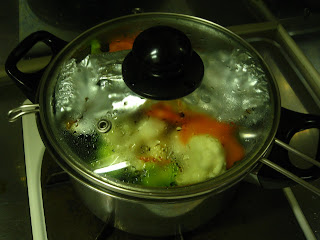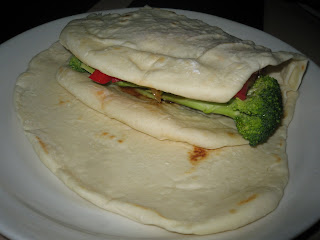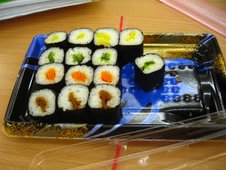Gomoku Kinpira is my Life

I went to Mosburger for the first time the other day and was pleasantly surprised by their ingredient forethought. I asked what was in the 五目きんぴら (gomoku kinpira--which is seasoned veggies and nori in a rice "bun") and was presented a print-out from the cash register with all the ingredients as well as another with all the usual だめs with a circle, triangle, or line beside each. I was presented a similar paper when I inquired about the french fries.
For your information, the 五目 is vegan (and delicious) and the french fries had a lot of triangles but no circles on anything non-vegan. Decide for yourself if a triangle is good enough for you. It was for me.
If you want to be really prepared, check out Mosburger's だめ checklist for all their products here: http://www.mos.co.jp/menu/ingredient_allergy/pdf/080704allergy.pdf. ● contains; △ share the same oil at the store; ▽ share the same cooking instruments at the store; ◇ made in the same factory; - does not contain (but may be times when accidentally contaminated).
Other ok options include: green salad, jam, soft drinks (wow! the selection!). Although the french fries are basically vegan, the onion rings contain milk.
Very happy to have made this discovery, especially just in time for my travelling in Kansai (where I had a lot of trouble finding vegan fast food last time)! yay Mosburger! Gomoku Kinpira is my life!
 ON JUST GIVE
ON JUST GIVE




































